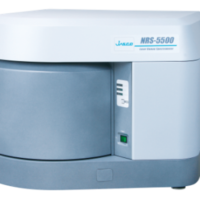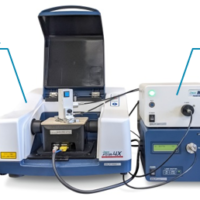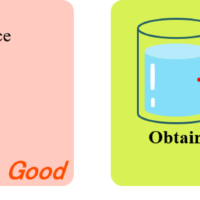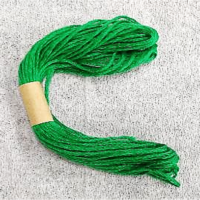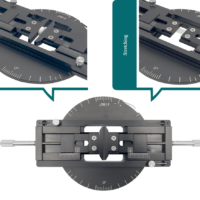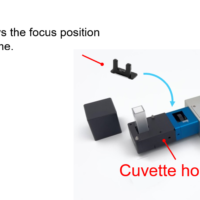Introduction
During Raman measurements using microscope slide glass, cover glasses or glass tubes for holding samples, the users have to consider some influences from it.
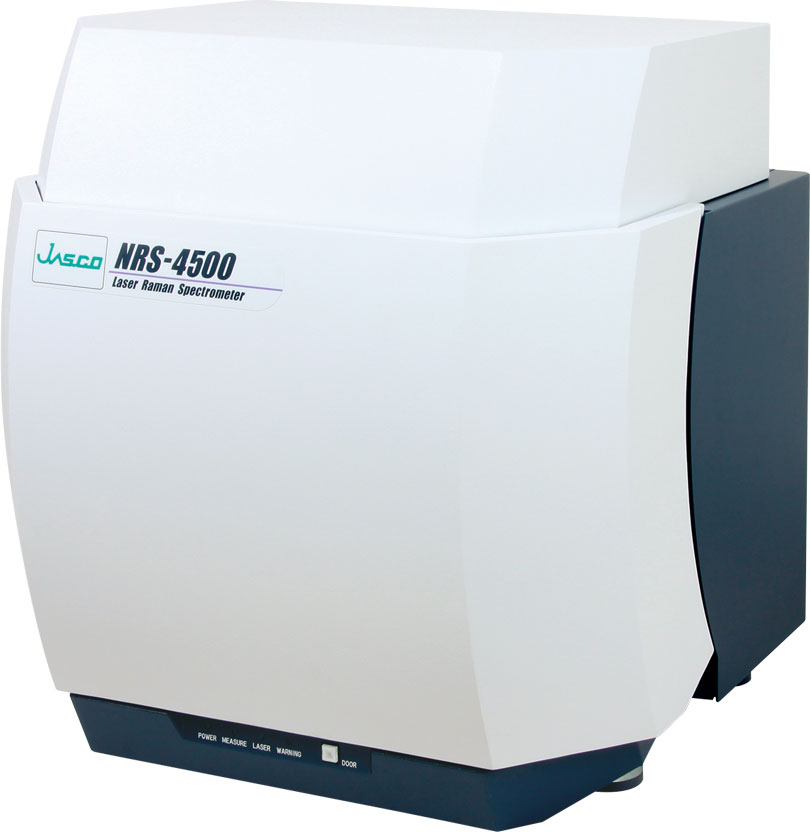
NRS-4500 Raman spectrometer
A fluorescence free glass is commercially available, however, it can still cause very weak fluorescence. Even though it is very weak, it may significantly affect Raman measurement results, specifically when changing the laser excitation wavelength. To estimate the influence from substrate fluorescence, the Raman and fluorescence spectra of simple microscope slide glass and quartz materials were measured using the laser excitation wavelengths of 532 and 785 nm. Raman and fluorescence spectra of the various samples are displayed as Figure 1.
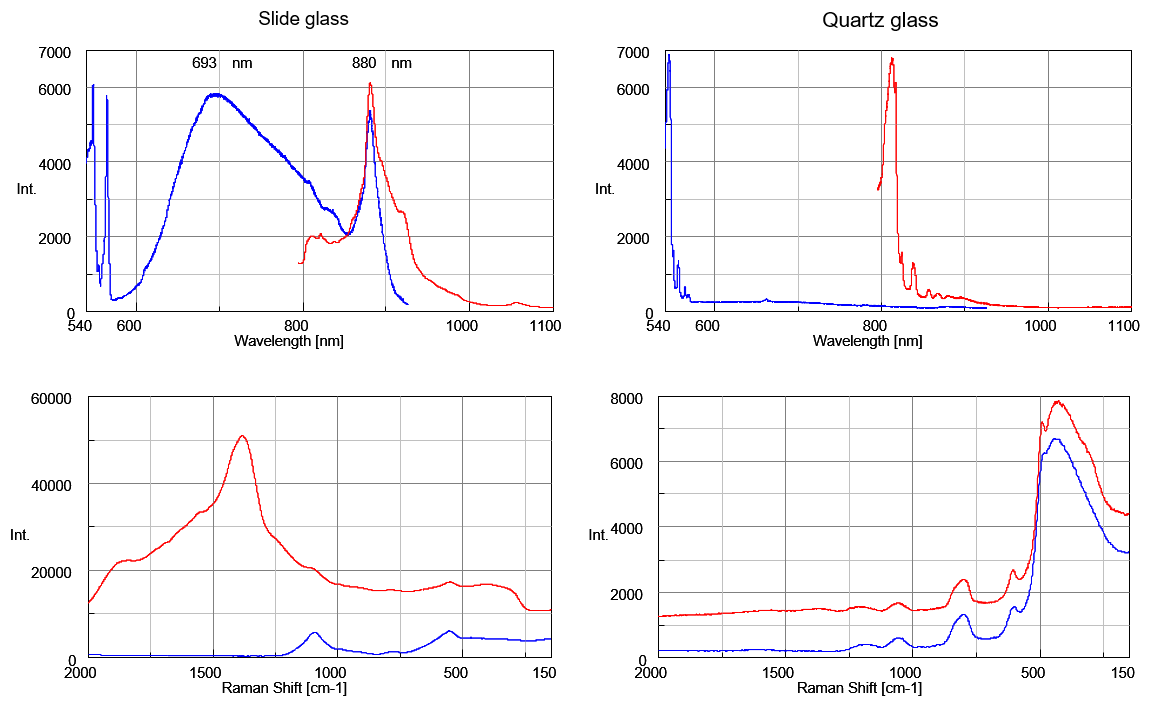
Figure 1. Fluorescence (top) and Raman spectra (bottom) of slide glass and quartz glass (blue: 532 nm excitation, red: 785 nm excitation)
For the measurement of slide glass using 532 nm excitation, a Raman peak in the low wavenumber region was observed, and the fluorescence peaks were also observed at 693 and 880 nm. Under the 785 nm excitation condition, the slide glass sample offered a fluorescence peak of 880 nm. And under 532 nm excitation condition, the observed peaks of the slide glass may not disturb the Raman spectral measurement (Raman shift: 0 to 4000 cm-1). However, the fluorescence peak of 880nm at 785 nm excitation may overlap the Raman shift around 1385 cm-1, and it may significantly disturb measurements due to the very strong intensity of the fluorescence as compared to the Raman spectrum.
On the other hand, for the quartz materials, only the Raman peaks related to Si-O were observed at both 532 and 785 nm excitations and there was almost no influence from fluorescence.
These results suggest that the quartz glass must be used for the measurement especially at 785 nm excitation. It may be feasible, however, to use glass (HPLC vials, NMR tubes, capillary tubes, etc.) if measurements using only 532 nm excitation are to be attempted.

